This collection consists of short (2-5 minute) introductory videos on neuro-ophthalmological condition pathophysiology, diagnosis and treatment modalities by Dr. Andrew Lee.
Andrew G. Lee, MD, Professor of Ophthalmology, Weill Cornell Medicine; Chairman, Department of Ophthalmology, The Methodist Hospital, Houston, TX; Adjunct Professor of Ophthalmology, Baylor College of Medicine; Adjunct Professor of Ophthalmology, University of Iowa Hospitals and Clinics and the University of Buffalo; Clinical Professor of Ophthalmology, Department of Ophthalmology and Visual Sciences, University of Texas Medical Branch at Galveston; UT MD Anderson Cancer Center; and Texas A and M College of Medicine.
NOVEL: https://novel.utah.edu/
TO
Filters: Collection: ehsl_novel_lee
| Title | Description | Subject | ||
|---|---|---|---|---|
| 1 |
 |
Aberrant Regeneration | Dr. Lee lectures medical students on aberrant regeneration. | Neuroanatomy; Ophthalmology; Nerve Regrowth |
| 2 |
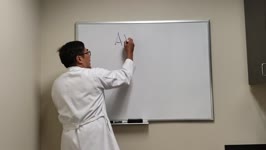 |
Aberrant Regeneration of Cranial Nerve III | Dr. Lee lectures medical students on the aberrant regeneration of the CN III. | Ischemic Palsy; Aberrant Regeneration; CN III Vasculopathy |
| 3 |
 |
Acetazolamide in Idiopathic Intracranial Hypertension | Summary: Idiopathic Intracranial Hypertension (IIH) • Increased intracranial pressure of an idiopathic nature • Treated with acetazolamide/weight loss + surgery as deemed necessary o Acetazolamide (Diamox) is an effective first-line therapy according to IIH Treatment Trial (IIHTT) -Lowers intrac... | Intracranial Hypertension; Acetazolamide; Meningitis |
| 4 |
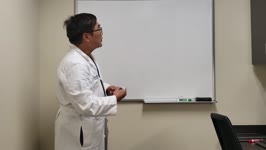 |
Acute Inflammatory Demyelinating Polyneuropathy (AIDP) vs Chronic Inflammatory Demyelinating Polyneuropathy (CIDP) | Dr. Lee lectures medical students on the subject of AIDP vs CIDP. | AIDP; CIDP; Guillain-Barre; Miller-Fisher; Bickerstaff; Polyneuropathy |
| 5 |
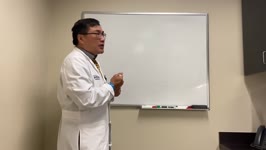 |
Akinetopsia | Summary: • Akinetopsia: disorder in which the patient cannot perceive motion o Also known as motion blindness • Symptoms: o Patients report seeing objects in slowed down motion, like stop-action motion o May report seeing individual frames of an object moving o Objects may appear to disappear an... | Akinetopsia; Motion Blindness |
| 6 |
 |
Alexia Without Agraphia | Dr. Lee lectures medical students on alexia without agraphia. | Neuroanatomy; Agnosia; Strokes; Vascular Anatomy |
| 7 |
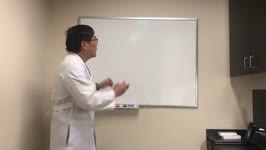 |
Alice in Wonderland Syndrome | Dr. Lee lectures medical students on the subject of Alice in wonderland syndrome. | Micropsia; Macropsia; Metamorphopsia; Akinetopsia; Hallucination; Depersonalization-Derealization |
| 8 |
 |
Amaurosis Fugax | Dr. Lee lectures medical students on Amaurosis Fugax. | Amaurosis Fugax; Neurology; Pathology; Vision Loss |
| 9 |
 |
Amblyopia in Ophthalmology | Dr. Lee lectures medical students on amblyopia. | Amblyopia; Anisometropia; Ophthalmology |
| 10 |
 |
Amiodarone Optic Neuropathy | Summary •Amiodarone optic neuropathy o Amiodarone is an anti-arrhythmic used by cardiology -Amiodarone produces a toxic optic neuropathy that looks similar to non-arteritic anterior ischemic optic neuropathy (NAION) o Differentiating features between NAION and Amiodarone Optic Neuropathy -NAION �... | Amiodarone; NAION; Disc Edema; Keratopathy |
| 11 |
 |
Amiodarone Optic Neuropathy | Dr. Lee lectures medical students on the subject of Amiodarone and its impact on neuro-ophthalmological health. | Pharmaceutical Side Effects; Bilateral NAION; Amiodarone |
| 12 |
 |
Amyloid and Neuro-Opthalmology | Dr. Lee lectures medical students on amyloid. | Pathology; Metabolic Diseases; Neurodegenerative Diseases |
| 13 |
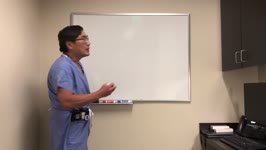 |
Anemic Retinopathy | Dr. Lee lectures medical students on the subject of anemic retinopathy. | Anemic Retinopathy; Hemorrhage; Leukemia; Ischemia |
| 14 |
 |
Anhidrosis | Dr. Lee lectures medical students on the subject of anhidrosis. | Anhidrosis; Horner's Syndrome; Oculosympathetic Pathway |
| 15 |
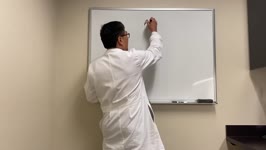 |
Anti Phospholipid Antibody Syndrome | Summary: • Antiphospholipid antibodies can cause recurrent thrombotic events: o Pulmonary embolism, deep venous thrombosis o Central retinal artery occlusion (CRAO)/branch retinal artery occlusion (BRAO) o Central retinal vein occlusion (CRVO)/branch retinal vein occlusion (BRVO) o Ischemic optic ... | Antiphospholipid Antibody Syndrome; Pulmonary Embolism; CRAO; BRAO; CRVO; BRVO; Thrombotic Events |
| 16 |
 |
Anton Syndrome | Dr. Lee lectures medical students on Anton syndrome. | Pathology; Ophthalmology; Vision Impairment; Anton Syndrome |
| 17 |
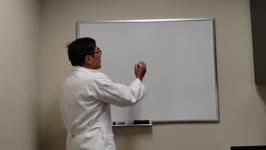 |
Apraxia | "So we're going to be talking today about apraxia. So apraxia is a very strange word and what it means is that you know how to do something, the muscles are intact, the nerve is intact, and the junction is intact, but you can't make it happen. So, in neurologic conditions, you might have an apraxia,... | Apraxia; Congenital Ocular Motor Apraxia; Acquired Ocular Motor Apraxia; Acquired Supranuclear Oculomotor Paresis; Apraxia of Lid Opening; Doll's Head Maneuver |
| 18 |
 |
Apraxia of Eyelid Opening | Summary • Symptoms of apraxia of eyelid opening and benign essential blepharospasm (BEB) both present with difficulty opening eyes. However, there are key differences o Blepharospasm: spasm of orbicularis oculi, squeezing, eye lashes are buried o Apraxia of eyelid opening: eyes are passively close... | Apraxia; Blepharospasm; Dystonia |
| 19 |
 |
Arterial Dissections In Neuro Ophthalmology | Summary: Unlike aneurysms, dissections occur mostly in the neck rather than the head and produce a false lumen that allows for stagnant blood to pool. Imaging: • Carotid and Vertebral dissections require that we image both the head and neck - MRI/MRA or CT/CTA in ER setting o MRI cross-sections of... | Dissections; Crescent Sign; Thromboembolic Diease; Horner's Syndrome |
| 20 |
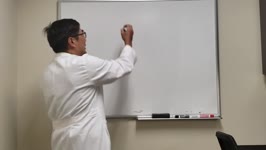 |
Asperger's Syndrome | Dr. Lee lectures medical students on the subject of Asperger's syndrome. | Asperger's; Autism; Photosensitivity; Prosopagnosia |
| 21 |
 |
Autoimmune Related Retinopathy and Optic Neuropathy (ARRON) | Dr. Lee lectures on the subject of ARRON. | Autoimmune Related Retinopathy and Optic Neuropathy (ARRON); Cancer Associated Retinopathy (CAR); Melanoma Associated Retinopathy (MAR) |
| 22 |
 |
Autoimmune Retinopathy | Dr. Lee lectures medical students on auto immune retinopathy. | Autoimmune Retinopathy; Photopsia; Ring Scotoma |
| 23 |
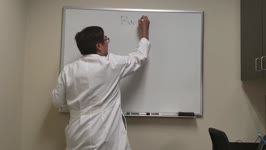 |
Band Atrophy | Dr. Lee lectures medical students on band atrophy. | Band Atrophy; Hemianopsia; Optic Chiasm |
| 24 |
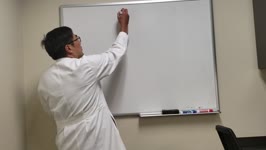 |
Bilateral Optic Neuropathy With Disc Edema | Dr. Lee lectures medical students on the subject of bilateral optic neuropathy with disc edema. | Bilateral Optic Neuropathy; Optic Disc Edema; Optic Neuritis |
| 25 |
 |
Blepharospasm | Summary: • Blepharospasm o Definition: benign spasm of the eyelids o Meige Syndrome: dystonia with blepharospasm that extends down the face o Dx: diagnosed clinically without the need for imaging o Tx: Botulinum toxin and rarely surgery (myectomy to strip out the muscles of the orbicularis) | Blepharospasm |
